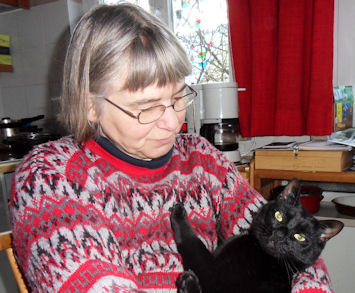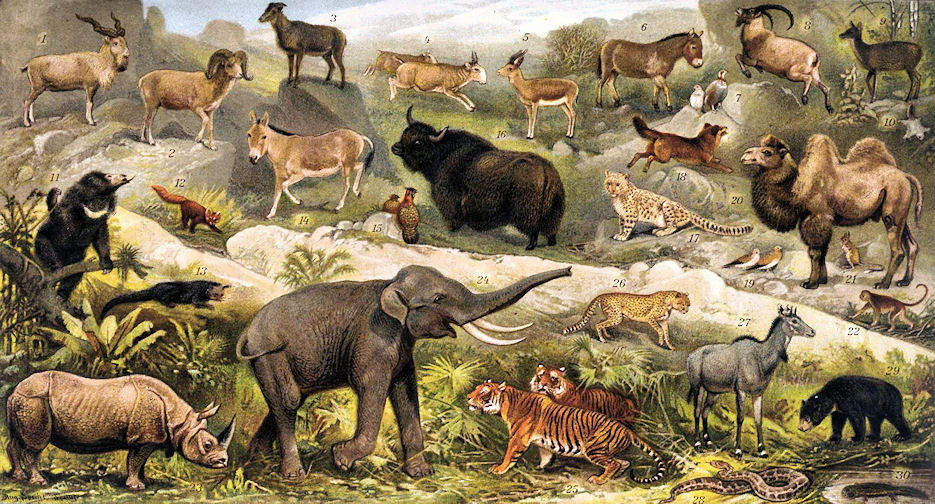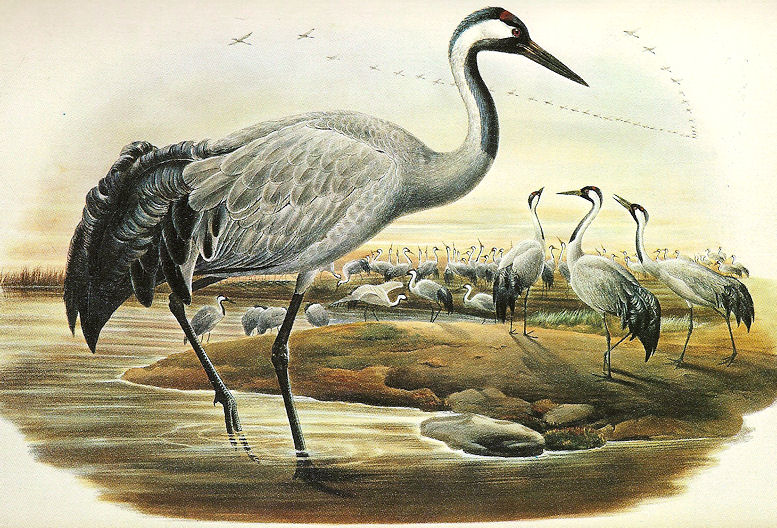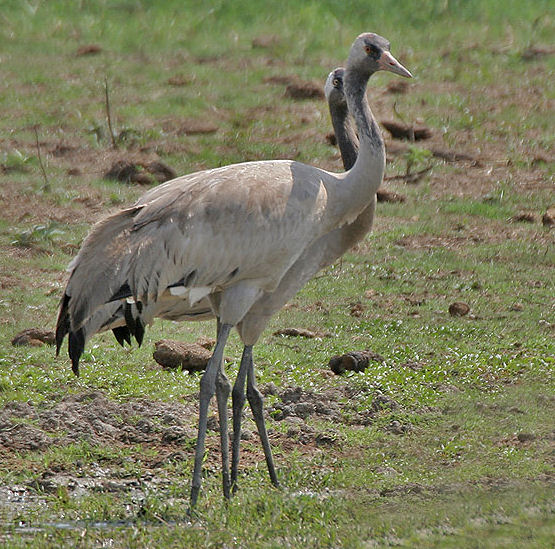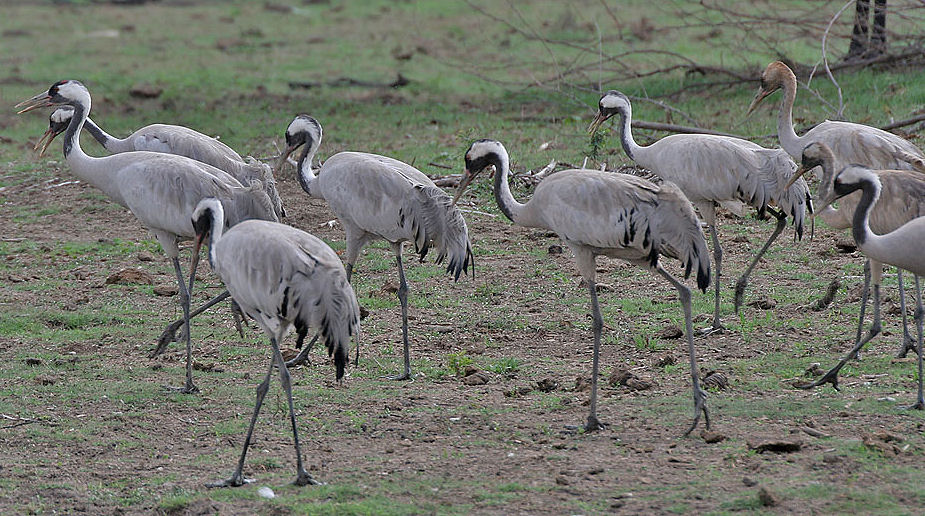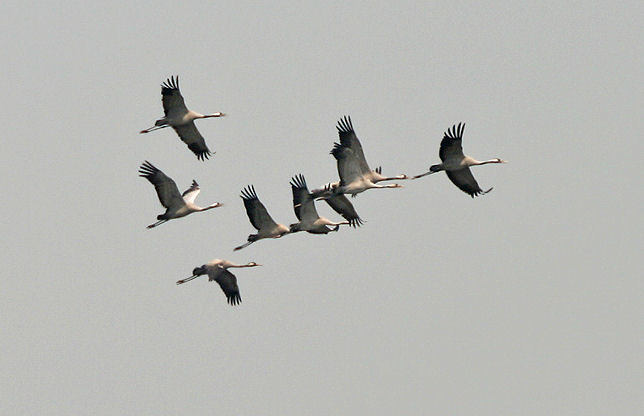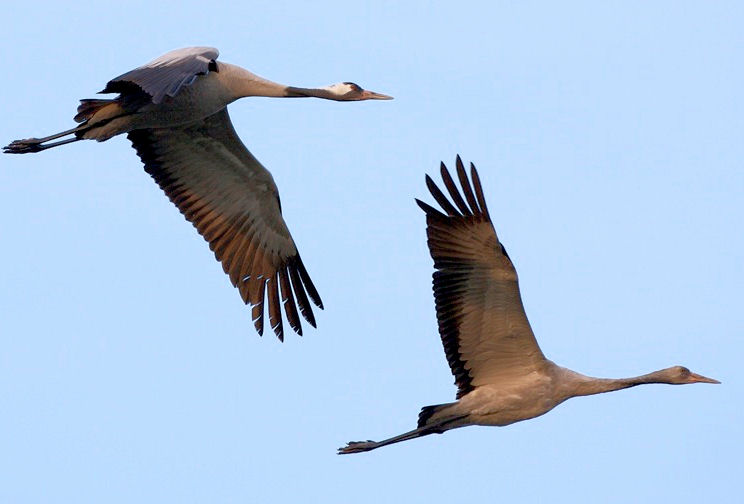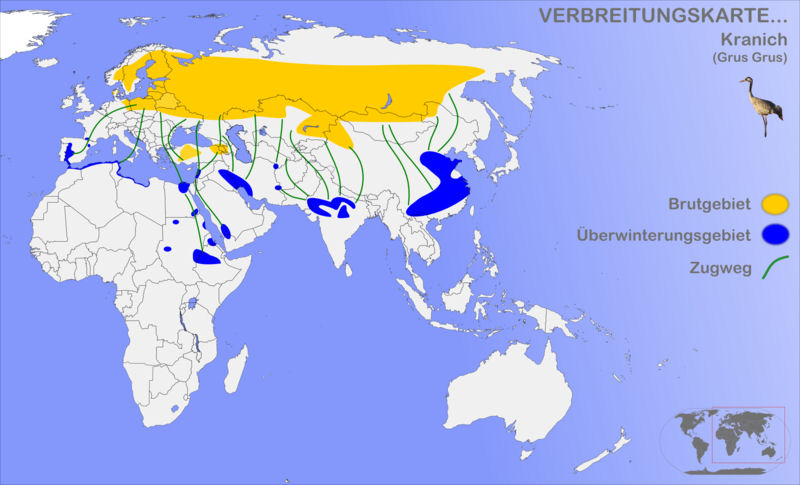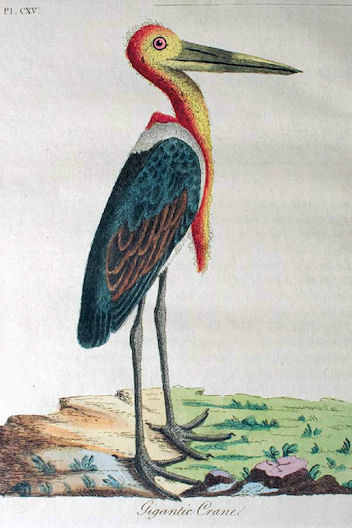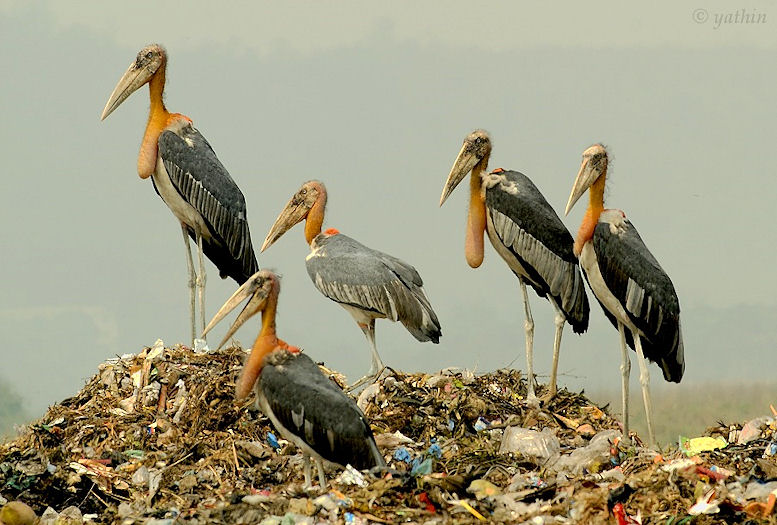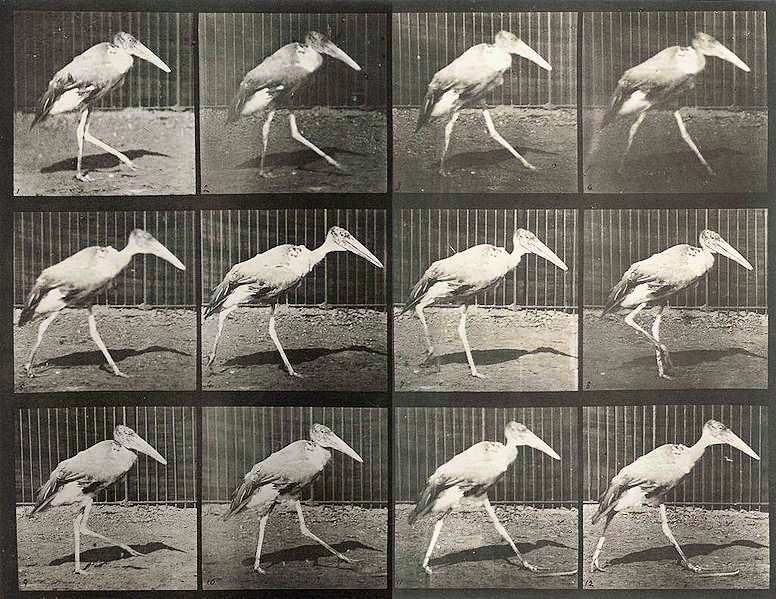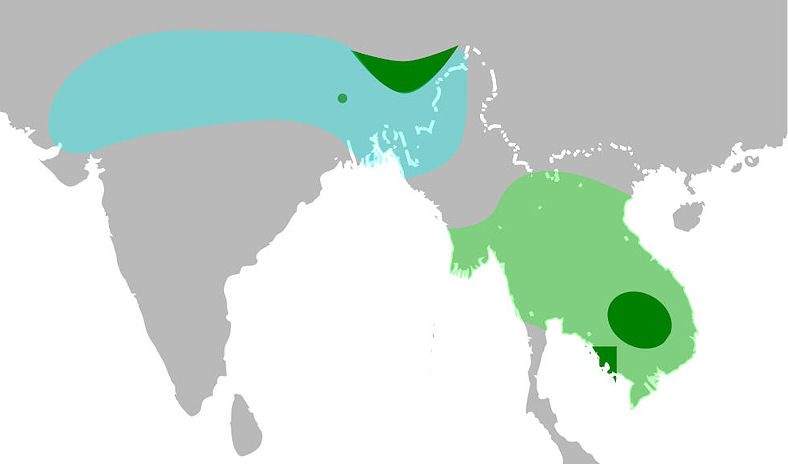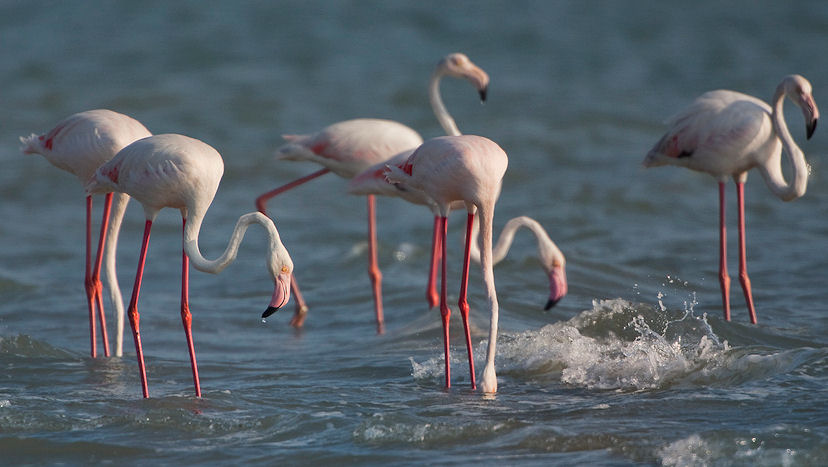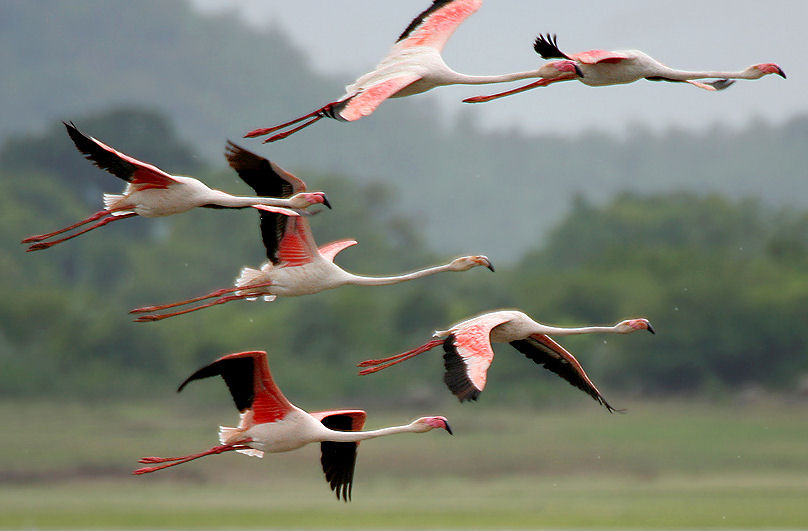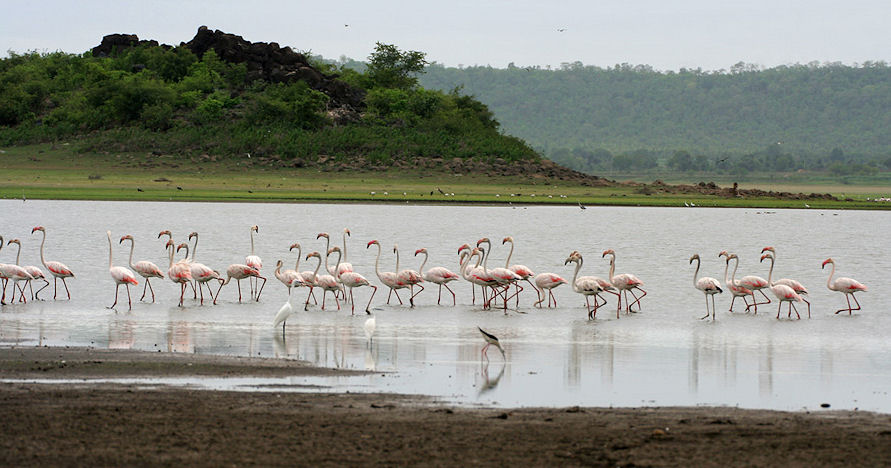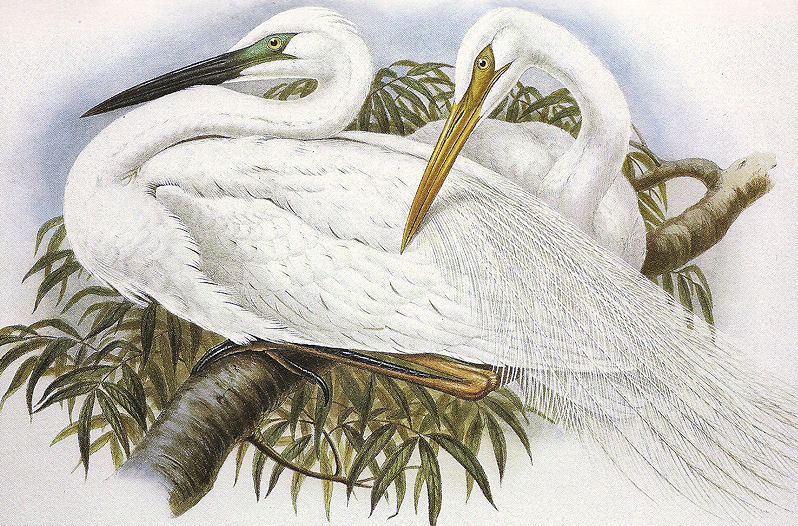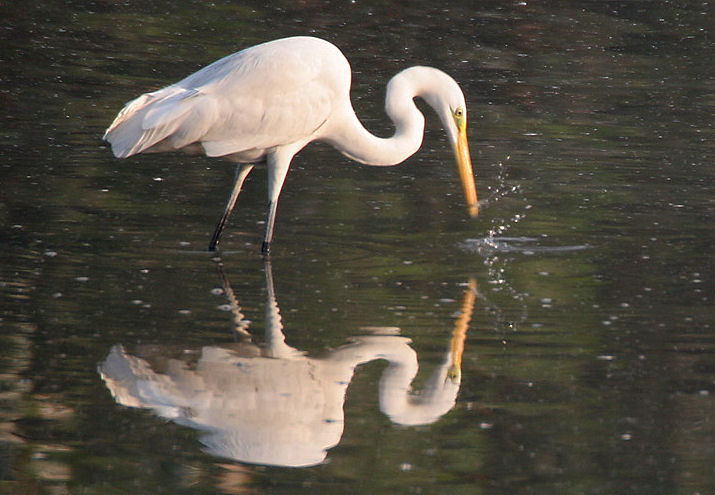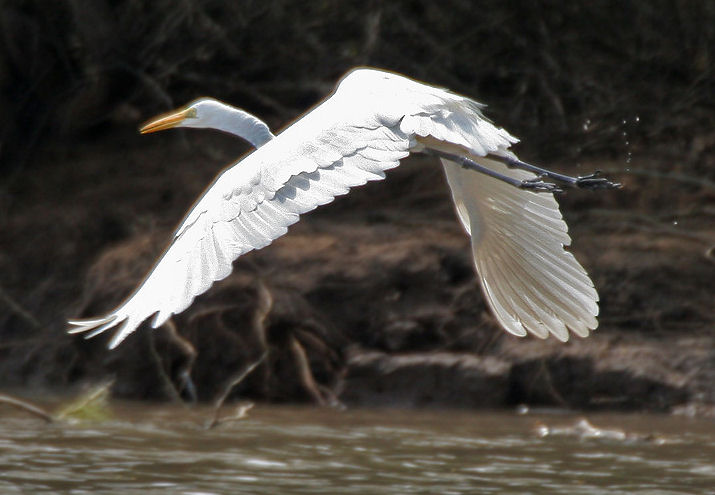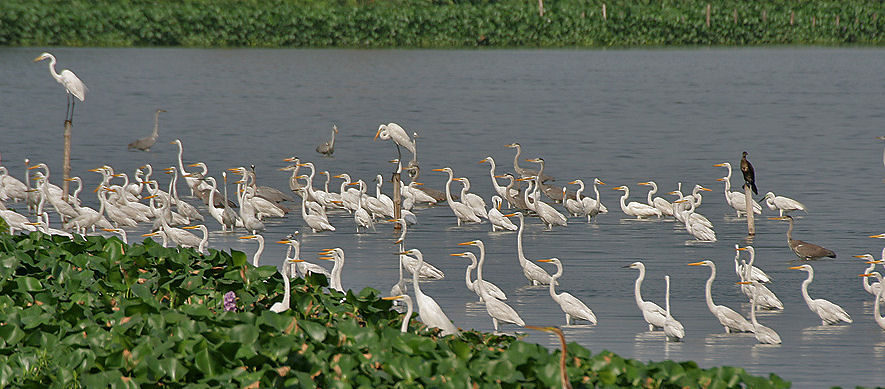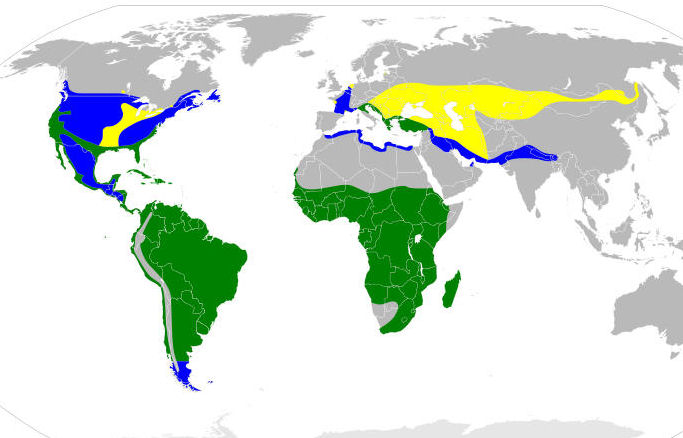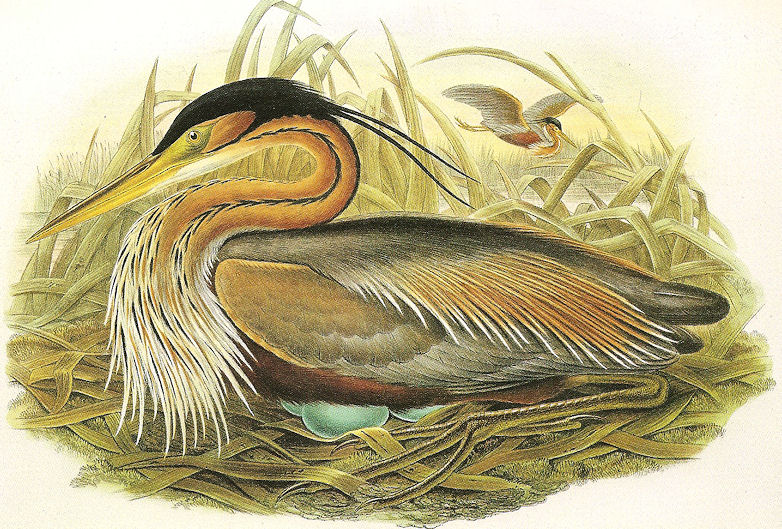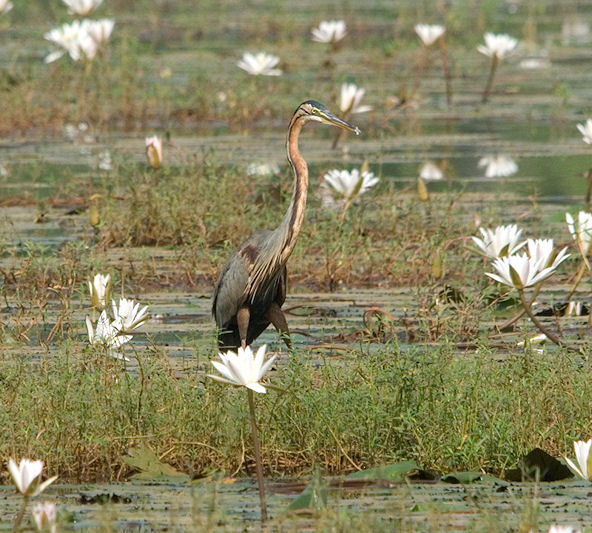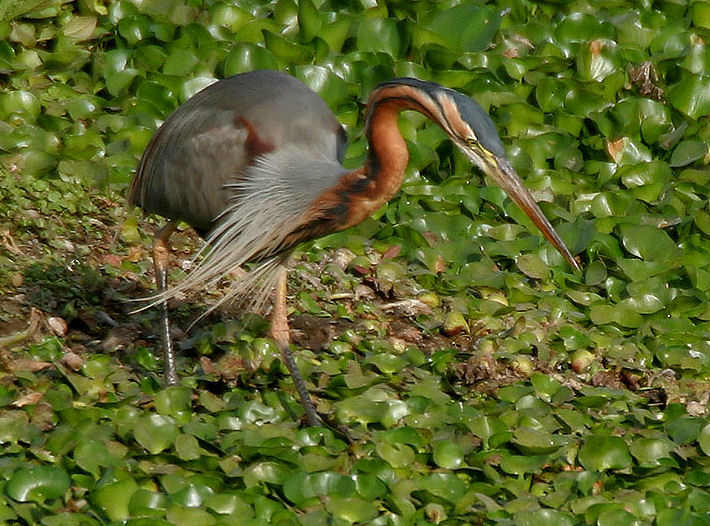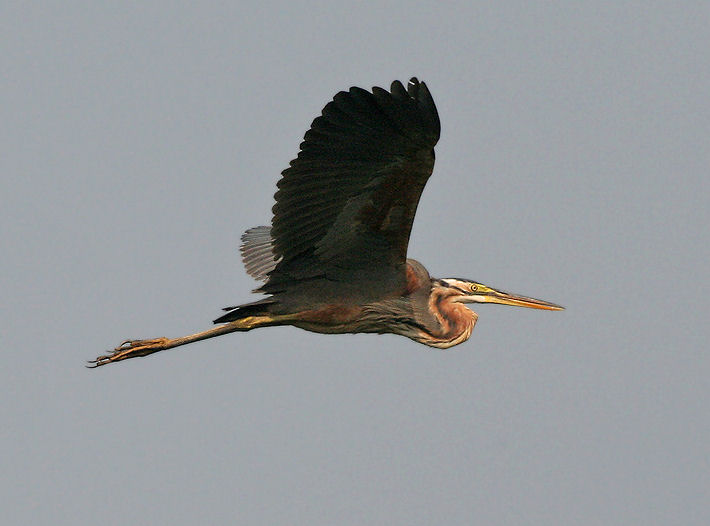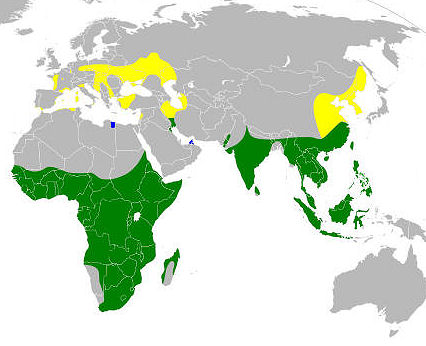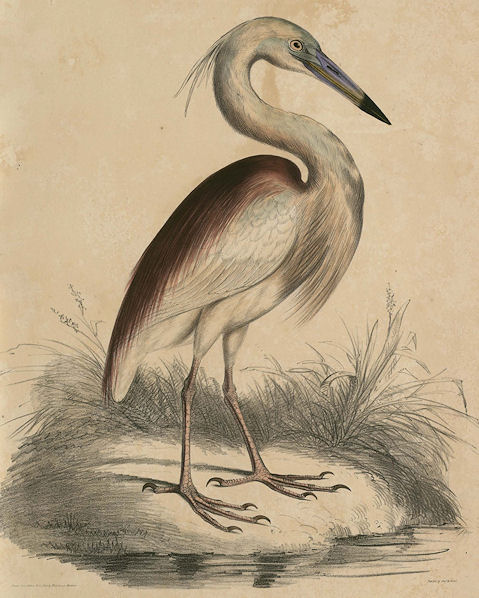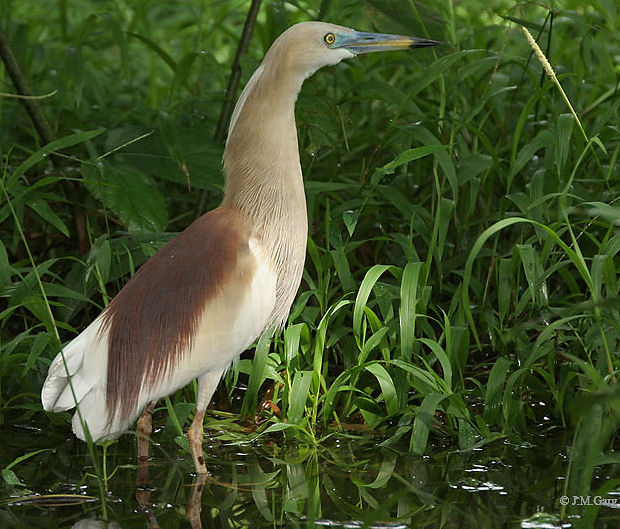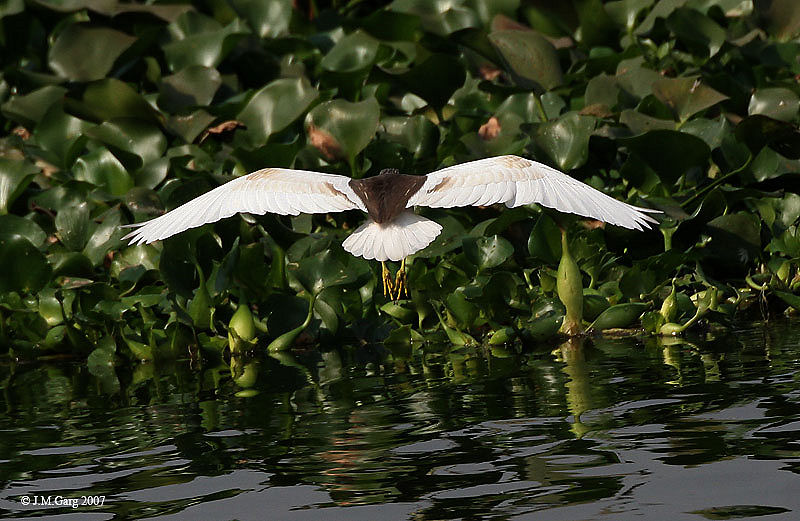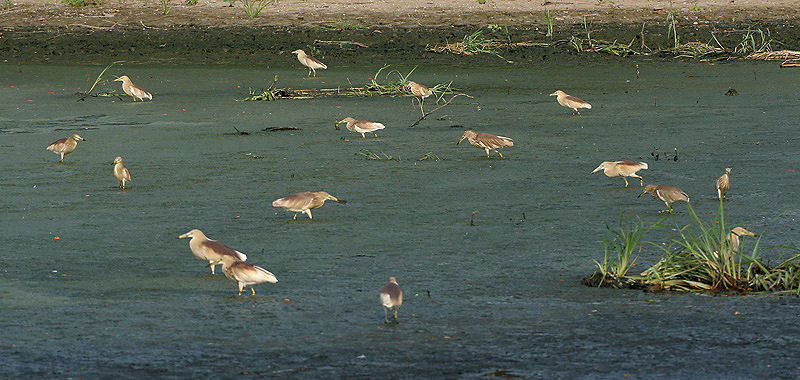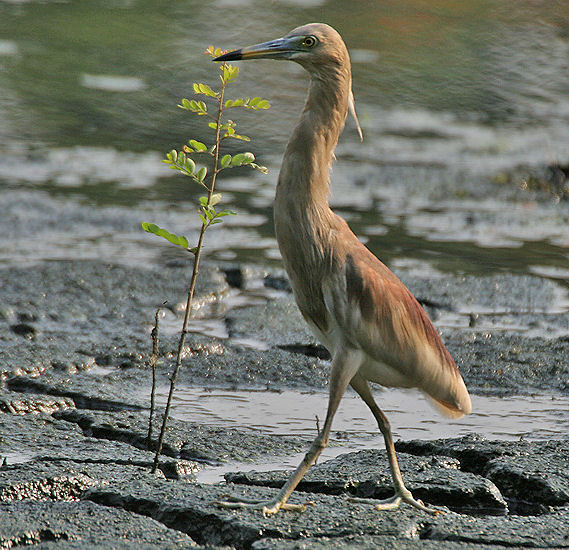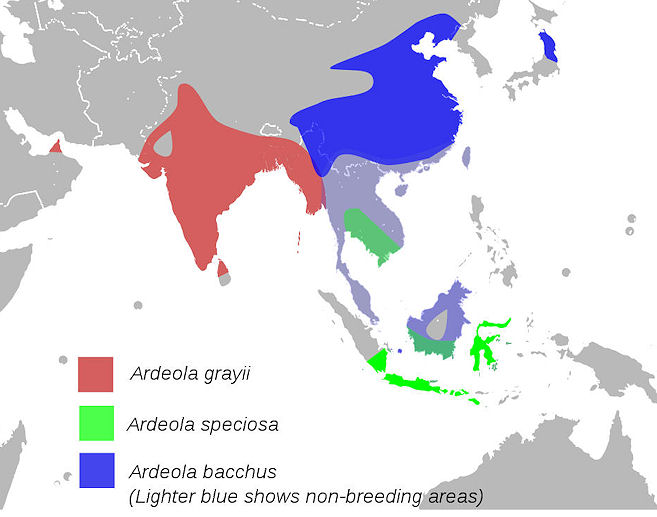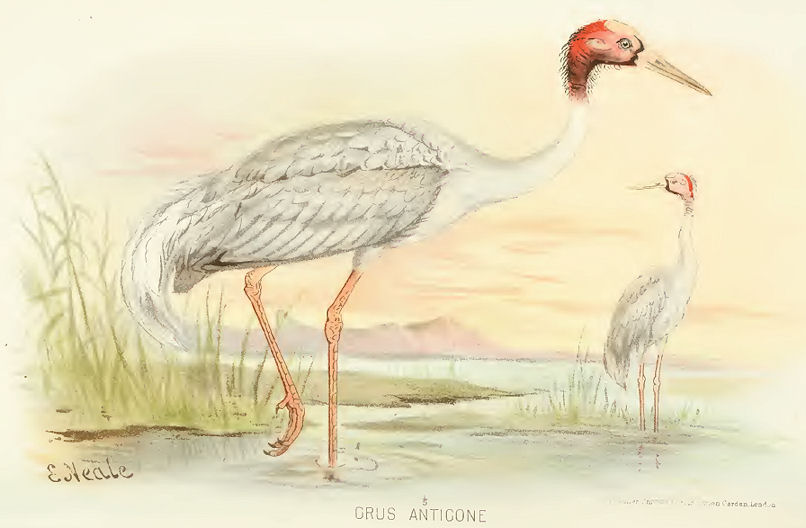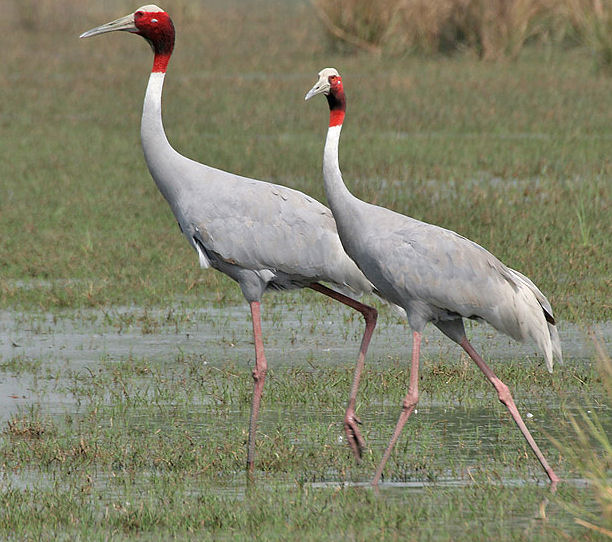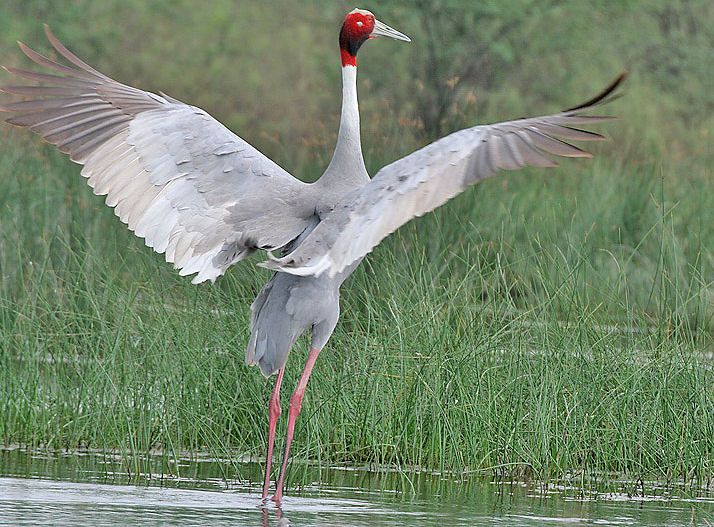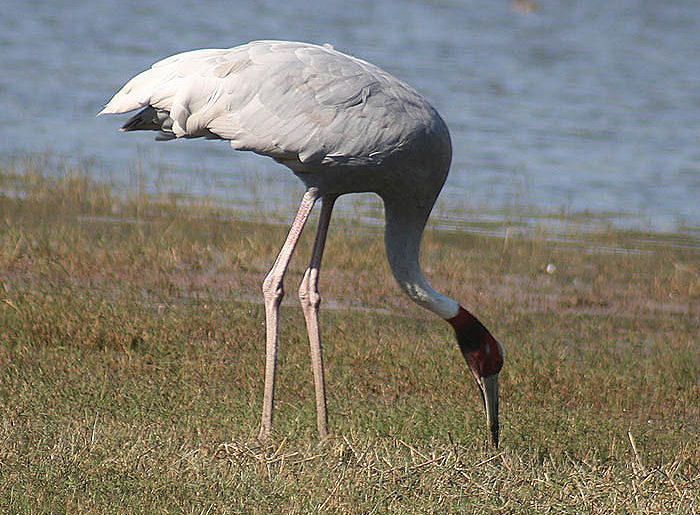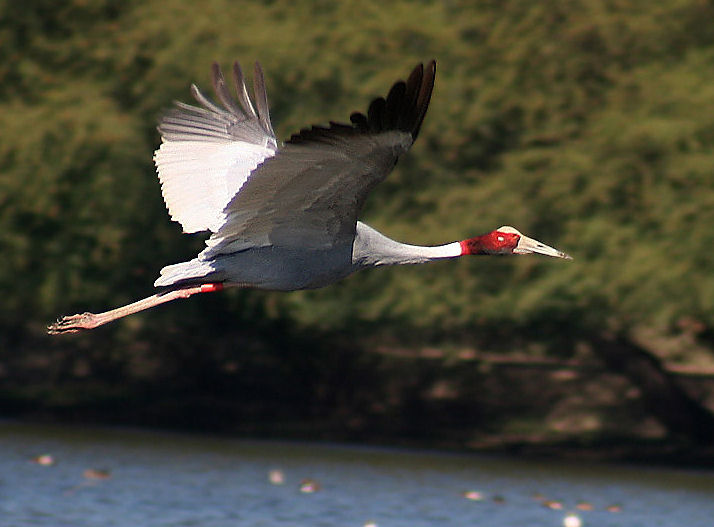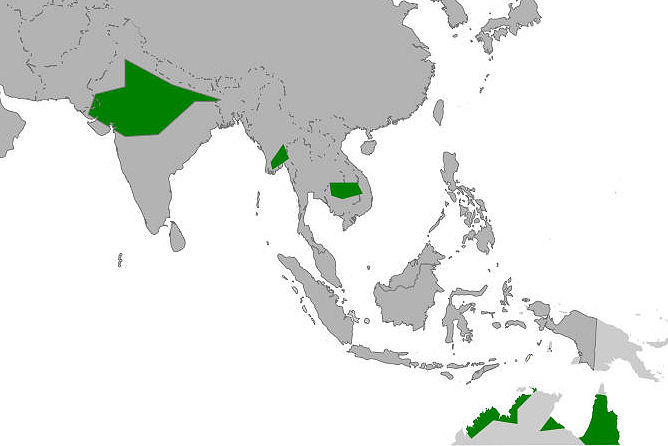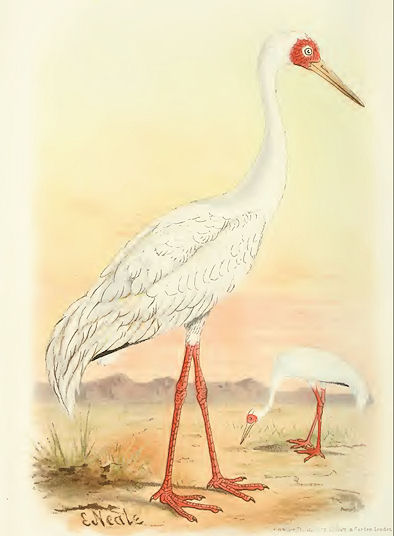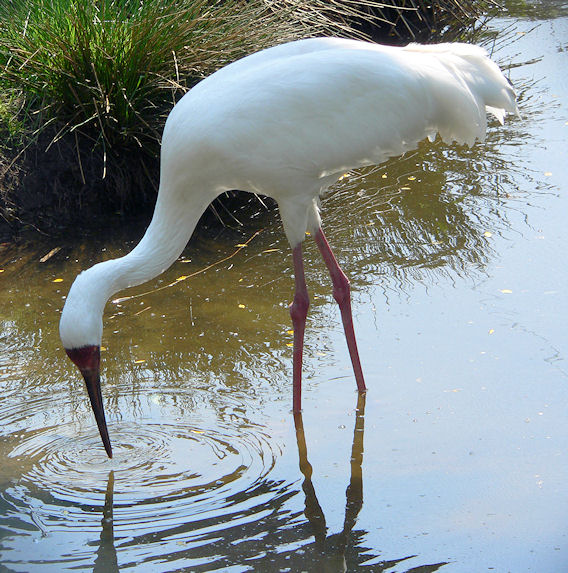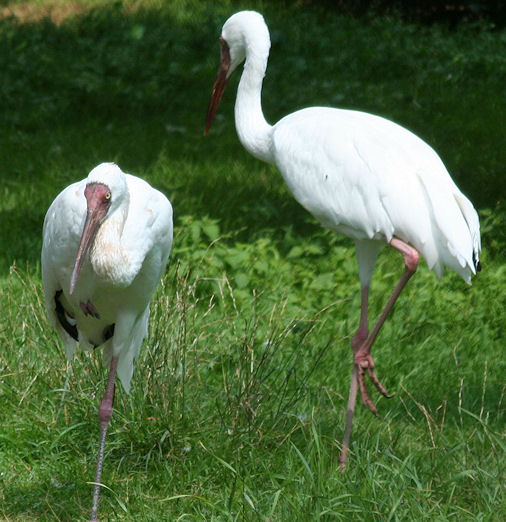|
"Habitat. Sind and throughout the greater part of
India ; rare in the South ; absent in Malabar, where it is replaced by
L. javanicus, spread throughout North and N.-E. India to Burmah and the
Malayan Peninsula. In the Deccan, also in Guzerat and Bengal, it is of much
service as a scavenger. Its food is very various. Lizards and frogs, and insects
too ; refuse from dung heaps also does not come amiss to it. From the craw of
three specimens collected about 80 miles east of Kurrachee, lizards (Uromastix
hardwickii) were extracted. In each an entire animal in four pieces was
found which had evidently not been long swallowed. The pieces were very neatly
cut ; the head making one, the body in two longitudinal halves, and the
tail entire being the fourth piece.
Breeds in inaccessible places in parts of
Bengal and Burmah, constructing a large nest of sticks, and laying 2 - 3 whitish
eggs, not unlike those of the Vultures ; huge broad ovals, in size from
2.87 to 3.3 in length, and from 2.1 to 2.55 in breadth."
[Quelle: Murray, James A.:
The avifauna of British India and its dependencies. -- London : Trübner,
1888-1890. -- 2 Bde. -- Bd. 2, S. 647f.] |
|
"The Adjutant is found throughout the greater
part of India, is rare in the South, but extremely common in
part of Northern India, and more especially in Bengal and
North-eastern India. I never saw it in the Carnatic nor in Malabar ; it is
occasionally met with in Mysore, and is not rare in Hyderabad,
thence becoming more common and abundant northwards. It spreads
through Burmah to the Malayan peninsula. It is only a temporary
resident in India, coming in towards the close of the hot
weather in April or May, and remaining till October. A very few barren
or unpaired birds remain occasionally in parts of the country.
In Calcutta, and some other large towns, the
Adjutant is a familiar bird, unscared by the near approach
of man or dog, and protected in some cases by law. It is an
efficient Scavenger, attending the neighbourhood of
slaughter-houses, and especially the burning grounds of the Hindoos, where the
often half-burnt carcasses are thrown into the rivers. It also
diligently looks over the heaps of refuse and offal thrown out in the streets
to await the arrival of the scavenger's carts, where it may be seen
in company with dogs, kites, and crows. It likes to vary its
food, however, and may often be seen searching ditches, pools of
water, and tanks, for frogs or fish. In the Deccan it soars at
an immense height in the air along with Vultures, ready to descend
on any carcass that may be discovered. After it has satisfied the
cravings of its appetite, the Adjutant reposes during the
heat of the day, sometimes on the tops of houses, now and then on trees,
and frequently on the ground, resting often on the whole leg
(tarsus). The Adjutant occasionally may seize a Crow or a
Myna, or even, as related, a small cat ; but these are rare
bits for it, and indeed it has not the opportunity, in general, of
indulging its taste for living birds, notwithstanding Cuvier's
statement that its large beak enables it to capture birds on the wing.
A writer in Chambers' Journal for 1861, describes an
Adjutant swallowing a Crow, and states that he 'saw it pass into
the sienna-toned pouch of the gaunt avenger. He who writes saw it
done.' Again, 'the Adjutant's cry very much resembles water
flowing from a narrow-necked bottle, and he invariably utters it when
about to swallow a piece of offal.' These utterly unfounded
statements called up Mr. Blyth in the Ibis, vol. 3, p. 268, who
showed that both the passing of the Crow into the pouch and the
call of the Adjutant were simply impossible, in consequence of
structural peculiarities which have been described in previous pages.
The Adjutant breeds in trees on rocky cliffs,
occasionally, it is said, in lofty trees away from hills. The
neighbourhood of Moulmein is one of the best known localities ; the
nests were found by Colonel Tickell on trees near the summit of
some of the remarkable limestone rocky hills near that place.
Captain Sparks had previously found the nest in the same locality ; and Mr.
Frith found them breeding in the south-east part of the
Sunderbuns. The Adjutant lays two white eggs, and the young
are covered with white down.
The feathers known as- Marabou, or Comercolly
feathers, and sold in Calcutta, are the under tail-coverts
of this and the following species. There is a popular superstition that
if you split the head of this bird before death, you will extract
from it the celebrated stone called Zahir-mora, or poison killer, of
great virtue and repute as an antidote to all kinds of poison."
[Quelle: Jerdon,
T. C. (Thomas Claverhill) <1811-1872>: The birds of India. --
Calcutta, 1862. -- Vol 2,2. -- S. 731f.] |

